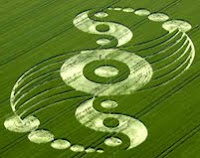
England: Experience the Mists of Avalon
July 1st - July 8th, 2010
The Chalice Well is among the best known and loved holy well in England. Many legends are attributed to it waters which flow at about 25,000 gallons per day and has a steady temperature of 52 degrees F that never varies.
Not least among the legends is that it represents the blood of Christ, miraculously springing from the ground when Joseph of Arimathea buried or washed the cup used at the last supper. For others the waters are acknowledged as the essence of life and so a spring like Chalice Well, is a direct expression of an unbounded life force. Since ancient times wells have been regarded as gateways, places where the veils between the realms are thinner, giving access to the mysterious and divine. They are a place of transformation when we invoke the power that these sacred waters bring to our lives. In the Celtic world holy wells were know as the entrance to the womb of the mother and the rivers and streams were acknowledged as the veins of the mother.
Discover Stanton Drew
“Stanton Drew is part of a sacred landscape pattern with centers at Stonehenge and Avebury. Neolithic people noted the lunar cycles and attempted to link the journey of sun and moon so as to determine the heavenly patterns of the univ erse. The time of the Full Moon nearest to the Winter Solstice was considered to be significant by them. The Moon then being in Cancer, the sign she rules, the female powers would have been particularly potent. The locating of Stanton Drew so near to water would also enhance this feeling. When the Full Moon that falls nearest to the Summer Solstice occurs a ceremony of initiation takes place. Vast fires blaze, as the initiate is led blindfold across the river to the entrance of the N.E. Circle. There the guardian of the stones issues a challenge before they may be permitted to pass any further. Each ring is screened from the next so that they must pass through a veil before gaining the next stage of understanding. Aware of the decorated posts, hung with garlands and the dancers who line the way, they follows a spiral path getting ever closer to their goal”. Gordon Strong - The Sacred Stone Circles of Stanton Drew.
erse. The time of the Full Moon nearest to the Winter Solstice was considered to be significant by them. The Moon then being in Cancer, the sign she rules, the female powers would have been particularly potent. The locating of Stanton Drew so near to water would also enhance this feeling. When the Full Moon that falls nearest to the Summer Solstice occurs a ceremony of initiation takes place. Vast fires blaze, as the initiate is led blindfold across the river to the entrance of the N.E. Circle. There the guardian of the stones issues a challenge before they may be permitted to pass any further. Each ring is screened from the next so that they must pass through a veil before gaining the next stage of understanding. Aware of the decorated posts, hung with garlands and the dancers who line the way, they follows a spiral path getting ever closer to their goal”. Gordon Strong - The Sacred Stone Circles of Stanton Drew.
Explore Crop Circles by Air and On The Ground!
There are many unknown factors to the crop circle phenomenon. Crop circles are happening in our reality here and now, and as the designs are imprinted in real fields in the countryside, they can be visited and studied at close hand.
- Crop Circles exist.

- They are found all over the world.
- More than 6,000 have been documented since 1980.
Over the last twenty years analyses of thousands of plant and soil specimens from hundreds of formations worldwide have been carried out in laboratories in various countries, and most extensively in the UK and in the USA.
These analyses show that the cellular structure of the plants has been strongly affected and that the composition of the soil greatly altered in crop circles.
- Their designs are based on complex geometry, ancient symbology and advanced mathematics.
- They can be decoded.
- The message that comes through is important for mankind at present.
Crop circles are complex and beautiful symbolic designs that are found impressed in a wide variety of crops and other vegetation and in any other ground covers that can take an impression.
A symbol is a form of language, a way of transmitting knowledge and, as with any language; the basic components have to be learnt before it can be read. Symbols based on the circle are called mandalas from the Sanskrit word meaning 'circle'. The crop designs can be simple or profoundly complex.
The Ancient Hermetic Tradition describes the three stages of study necessary for deciphering a symbol thus:
- Begin by contemplating the particular symbol, trying to understand with your intellect the numbers and the geometric forms that underlie it.
- When you have understood the structure of the symbol, meditate on its form, feeling it with your inner being.
- Only once you have fully experienced the results of the first two stages are you in a position to draw it on the ground. Then go in it and sense its energy with your body.
Join us for an experience of Ancient Avalon, exploring crop circles, and more ...


